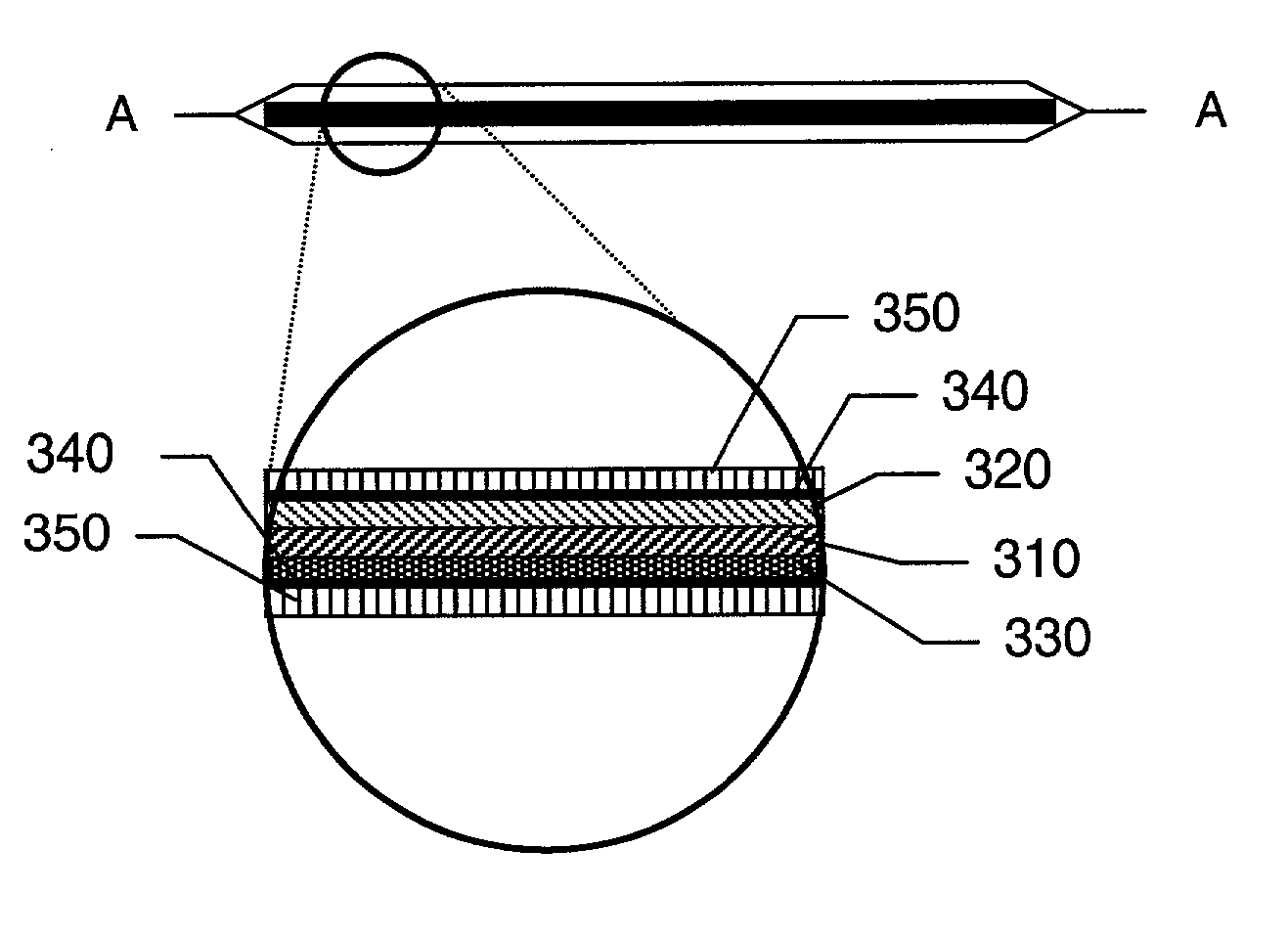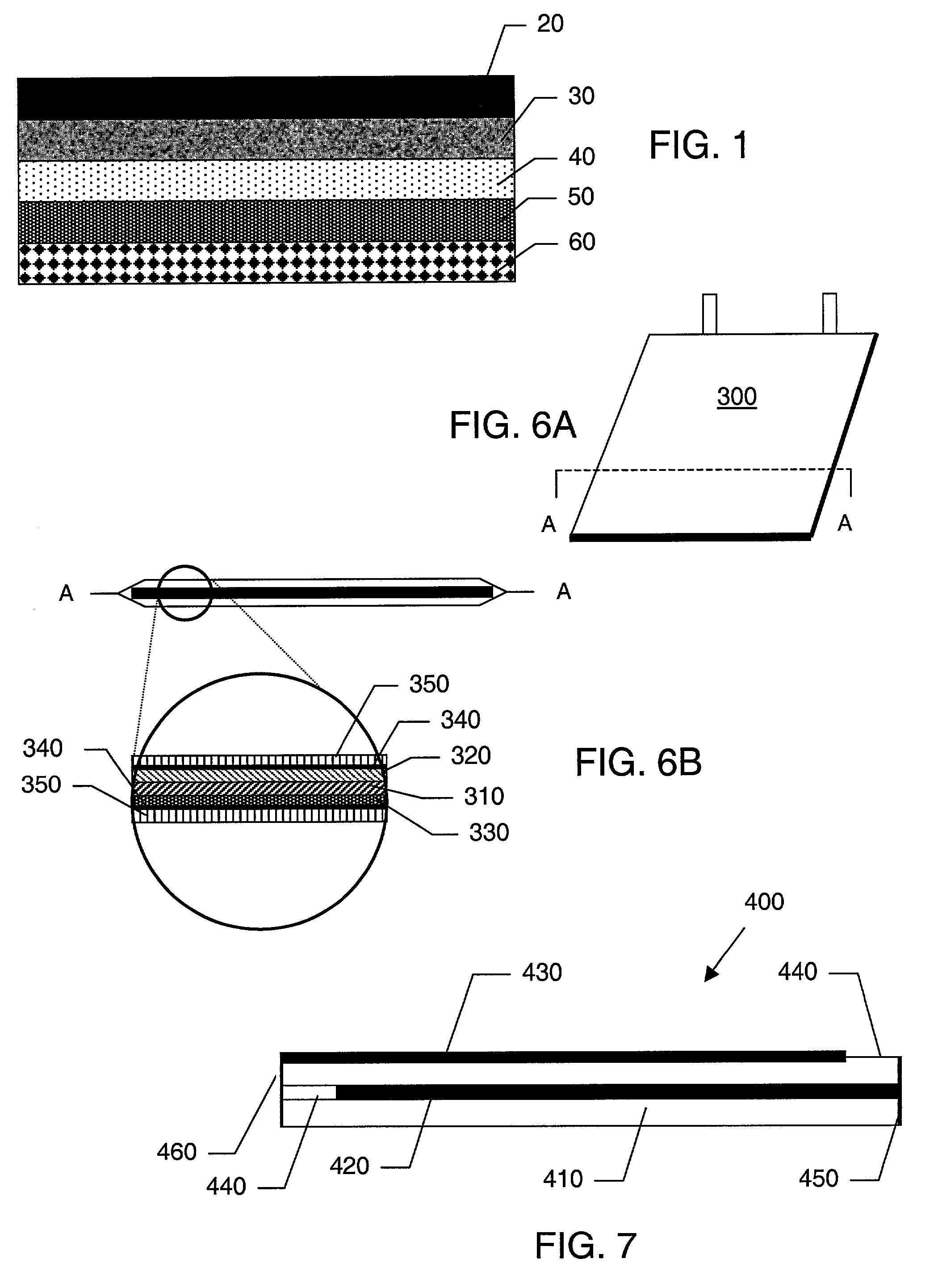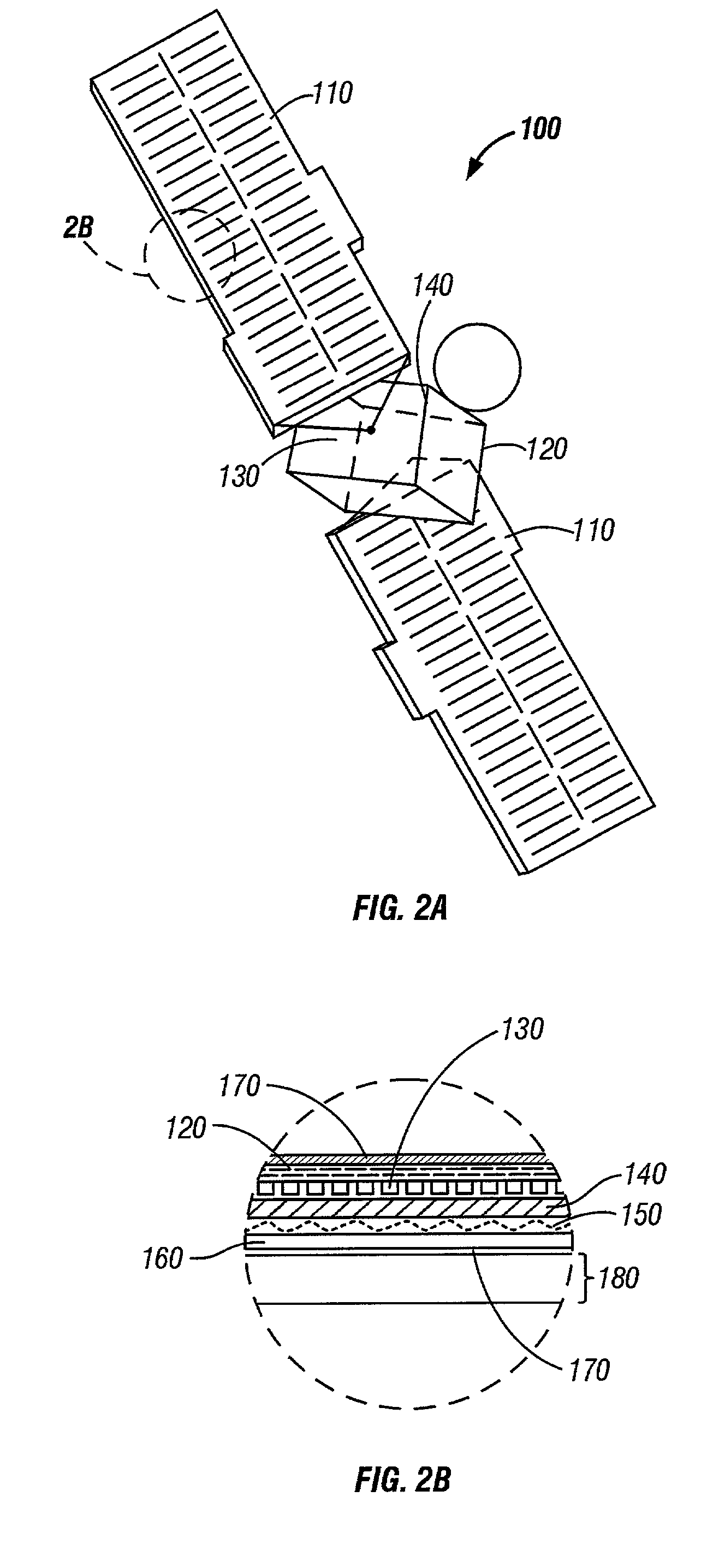Structurally embedded intelligent power unit
a power unit and structure technology, applied in the direction of secondary cell details, flat cell grouping, secondary cell servicing/maintenance, etc., can solve the problems of insufficient power supply for small devices, insufficient power supply for personal devices such as radios or wristwatches, and inability to integrate photovoltaic cells into the covering with the photovoltaic cell layer, etc., to achieve significant space saving, high power on demand, maintenance-free
- Summary
- Abstract
- Description
- Claims
- Application Information
AI Technical Summary
Benefits of technology
Problems solved by technology
Method used
Image
Examples
Embodiment Construction
[0024]The present invention overcomes many of the shortcomings of power source technologies presently available for use in space exploration and earth orbital operations. In accordance with certain embodiments of the present invention, an electrical power system for a structure is provided which comprises a structural member containing at least one integral solid-state power unit. The terms “integral or integrated solid-state power unit” means that the component parts of the power unit are laminated together or formed as a single unit. The integrated power unit is preferably embedded or integrated into a structural member (e.g., a truss, housing, or structural panel) of a spacecraft, vehicle, building, apparatus or other structure, or the laminated power unit itself is configured as a dual or multi-functional structural member for use in constructing or assembling a structure as well as serving as a power source for the structure. The structurally integrated power units disclosed he...
PUM
| Property | Measurement | Unit |
|---|---|---|
| conductivity | aaaaa | aaaaa |
| conductivity | aaaaa | aaaaa |
| particle size | aaaaa | aaaaa |
Abstract
Description
Claims
Application Information
 Login to View More
Login to View More - R&D
- Intellectual Property
- Life Sciences
- Materials
- Tech Scout
- Unparalleled Data Quality
- Higher Quality Content
- 60% Fewer Hallucinations
Browse by: Latest US Patents, China's latest patents, Technical Efficacy Thesaurus, Application Domain, Technology Topic, Popular Technical Reports.
© 2025 PatSnap. All rights reserved.Legal|Privacy policy|Modern Slavery Act Transparency Statement|Sitemap|About US| Contact US: help@patsnap.com



